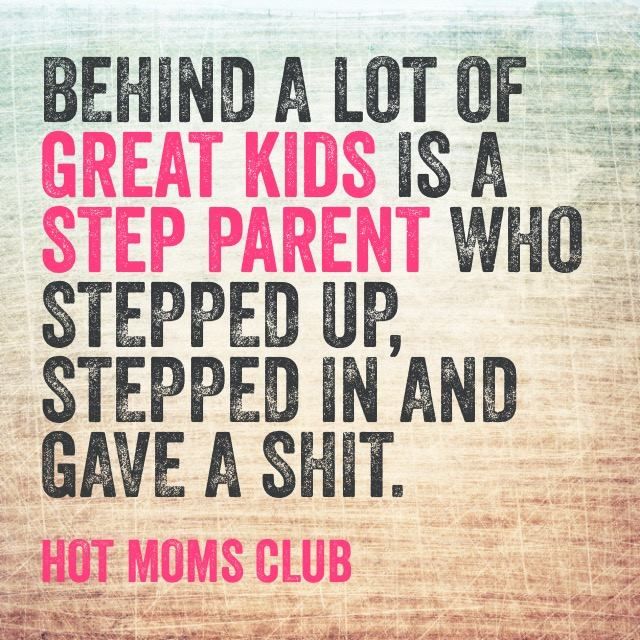 "Whenever and however you give birth, your experience will impact your emotions, your mind, your body, and your spirit for the rest of your life" - Ina May Gaskin If Ina May is right why aren't we more mindful of our words? Countless times I have heard birth workers, healthcare professionals, friends and family refer to operative birth as a "section" or "c-section". What people don't often recognize is words hold power. This isn't just semantics! There are no do-overs regarding the birth of a baby and we need to be considerate. Words have the ability to encourage attachment or make people detach from their own story. When referring to any birth, vaginal or cesarean, please be mindful. Operative birth is still birth and deserves the same respect! Going forward please consider referring to a c-section as a cesarean birth.
0 Comments
 Hot breakfast ready and waiting! Feed the whole family or just yourself. Apple Cinnamon Crockpot Oatmeal Yield: 6 servings Ingredients: 1 1/2 cups of steel-cut oats 3 1/2 cups water 3 cups unsweetened almond or cashew milk 3 large apples, peeled. cored and diced 1/4 cup of brown sugar, honey or stevia 1 1/2 teaspoons vanilla extract 2 teaspoons ground cinnamon 1 teaspoon ground nutmeg (optional) 1/3 teaspoon mineral salt 3 scoops pristine whey protein (optional) Banana Bread Crockpot Oatmeal Yield: 6 servings Ingredients: Same as in apple recipe (above) but omit apples and cinnamon. Add 2-3 large bananas Add 1 1/2 teaspoons pure banana extract Add 1 1/2 teaspoons ground nutmeg Directions 1. Put all ingredients in crockpot. Stir well and place into the crockpot element base. 2. Turn on low heat before going to bed. Cook all night. In the morning, stir well before serving. Enjoy! 3. Refrigerate or freeze any leftovers. BONUS: Oats are a galactagogue! This means if you are a breastfeeding mother you may notice an increase in your milk. Don't worry, if you are not lactating you will not start.  Chrissy is a busy momma of 4, Registered Nurse and former birth doula. We are excited to have her share her mompreneur side and the reason why ELLIE EARS were created. Guest blog by Chrissy Mouland There are so many things to do and know as a new or expecting parent, and a ton of new products out there designed to “make life easier”. But how do you know what you really need, how do you know what will “work” as it is promised, how do you know what to spend your money on? At Ellie Ears we strive to make it easy for you, to answer all your questions, so that you may make the decisions that fit best for your family. We have created a product that blends function with style. As a momma of four, I understand the difference between WANTS and NEEDS. We WANT those essential items to be beautiful and fun and reflect the style of families today, and NEED them to be safe, practical and durable. Our iconic Ellie Ears positional support pillow leads the way in all these departments. We use 100% cotton fabrics, designed in Canada, and Ellie Ears are manufactured right here in Calgary. OUR WHY My eldest daughter had plagiocephaly, “a flat spot”, which was not noticed early, and later considered minor, it went untreated. Seemingly minor to most, this was unfair to a preschooler who loved to play dress-up but could never “complete her outfit” as she has never been able to wear a headband with comfort. After my third babe was born I was gifted a support pillow by our chiropractor. With long drives to and from the family farm and what would be 2 babies who hated their carseats, the pillow became a blessing in assisting them to be more comfortable. After gifting a few to friends and hearing their satisfaction, I researched everything similar in function on the market. There was nothing readily available, made in Canada at a reasonable price point, and backed with research. I gathered feedback from moms and pediatric professionals, including chiropractors, physiotherapists and midwives, and designed a pillow to meet multiple needs - with the purpose of preventing conditions such as “flat spots” and “tight neck muscles” (torticollis) by providing positional support head, neck and spine, with the hope that every little girl will be able to wear her crown proudly and comfortably. If you are a breastfeeding mother, you do not want to deplete yourself of these essentials because it can leave your milk making ability vulnerable.
Many mothers (including our team) can benefit from well balanced, immune boosting smoothies. What family doesn't enjoy all-in-one, kid friendly, quick options? So mama, for your convenience here are our go-to favorite smoothie recipes. Enjoy! xo
Guest Blog written by Shari Franks from Earthside Journeys
May 7-13th, 2017 is Infertility Awareness Week in Canada. It is an opportunity to bring to light the epidemic that exists for the many men, women and couples who are faced with the struggle of creating a family. This is the time to talk about the medical diagnosis that is often misunderstood. I share my story to bring this issue to the forefront so that those who walk this path know that they do not walk alone. Is it safe?
We all know that exercise improves muscle tone, strength and endurance, but is it safe during pregnancy? Both the Society of Obstetricians and Gynaecologists of Canada and the American College of Obstetricians and Gynecologists (ACOG) recommend that pregnant women include exercise in their healthy lifestyle, as long as they have no medical or obstetrical complications. ACOG suggests a total of 30 minutes or more of moderate exercise every day, or on most days, throughout pregnancy. Exercise in pregnancy can ease or eliminate aches and pains, leg cramps and circulatory challenges; strengthen pelvic floor muscles; and aid in the prevention of insomnia and pregnancy blues. In addition, exercise provides us with a better self-image, prepares our bodies for the physical journey of labour and birth, helps us retain our pre-pregnancy fitness levels and makes returning to our pre-pregnancy shape achievable. Although many sources compare natural childbirth (involving no pain medications or interventions) to running a marathon, I don’t suggest you start there. Choose your activity by taking into account your fitness level, as well as common sense safety precautions. Brisk walks, stair climbing, swimming and downloadable prenatal workouts are fantastic low-impact and low- or no-cost options. If you can afford to invest a little and you feel social, a group class like water aerobics, prenatal yoga or prenatal dance might be the perfect fit. Classes also allow you to meet other moms-to-be. Now that you’re excited to get moving, don’t forget to prepare yourself well. Avoid overheating by wearing breathable, layered clothing; drink generous amounts of water before, during and after exercise to stay hydrated; wear comfortable running shoes with proper support for your ligaments and tendons; and, most importantly, know your limits but have fun! Editor's Note: This piece was originally written for Guided Synergy Magazine in 2014. Defining the professions
It’s safe to say that Alberta is booming, as many couples start or expand their families! However, not all women know how midwives and birth doulas can care for and support them in their birthing experience. As a birth doula, I have realized that the roles of these professionals need defining. Both the midwifery and the doula models of care trust in and promote birth as normal. Registered midwives and birth doulas are experienced, trained professionals. However, the specific roles they play differ. Midwives, considered experts in normal pregnancy and birth, provide care to mothers and babies during the prenatal, birth and postpartum periods. Midwifery care has been fully funded by Alberta Health Services since 2009. In addition to delivering babies, midwives can perform other clinical tasks, including screening their patients’ physical and emotional health, ordering tests and making referrals to specialists when needed. Their care is based on evidence and is woman centred. Midwives collaborate with each other, often working in teams, and with other health professionals. In contrast, birth doulas do not undertake medical tasks or deliver babies. As part of a woman’s birthing team, which may include a midwife, doctor and nurses, birth doulas offer continuity of care to the mother and her partner by providing information and emotional and physical support before, during and just after the birth. The unbiased information they give enables women to make informed choices about their care. A birth doula stays with the mother throughout her labour, providing nonmedical physical and emotional comfort, and, if needed, facilitates communication with her other care providers. The fact that the doula focuses on the needs of the mother can be especially helpful in a busy hospital environment. The doula can also encourage the woman’s partner to be as involved in the birth experience as desired. Some partners report enjoying the birth experience more because they don’t feel solely responsible for coaching and supporting the mother. Studies have shown that having a professional birth doula present during labour and birth provides the following benefits: • 50% reduction in the cesarean rate • 25% shorter labour times • 60% reduction in epidural requests • 40% reduction in Pitocin use • 30% reduction in pain medication use • 40% reduction in forceps deliveries In addition, research has shown that parents who receive care from a doula can have fewer negative feelings about their birth experience; feel more cared for, secure and self-confident; experience greater success in adapting after the birth and in breastfeeding; and have lower incidences of postpartum depression and abuse. Their babies tend to require shorter hospital stays. As support professionals, doulas recognize that birth is a transformative experience for women, as well as for their families. They aim to provide compassion, support and informed guidance to help their clients through this transformation. Because each situation is different, they tailor their care to the unique needs of each woman and her family. As a professional birth doula and prenatal childbirth educator, I strive to promote and preserve maternal and infant safety during childbirth. I recognize that in areas without a practicing registered midwife, the safest option is hospital birth. I am hopeful that the Alberta Association of Midwives will grow and that an increase in registered midwives, in both urban and rural settings, will offer families safe alternatives for prenatal care and birth. Editor's Note: This piece was originally written for Guided Synergy Magazine in 2014 With time information evolves. This happens with everything. It happens in all professions.
Working in maternal-infant health we are mandated to remain current and accept changes. This is one of the only ways to care for clients/patients appropriately. However this is not always the case. Archaic protocols often take precedence. In my experience the most inconsistent information and support protocols belong to: |
|
Services
|
|




 RSS Feed
RSS Feed